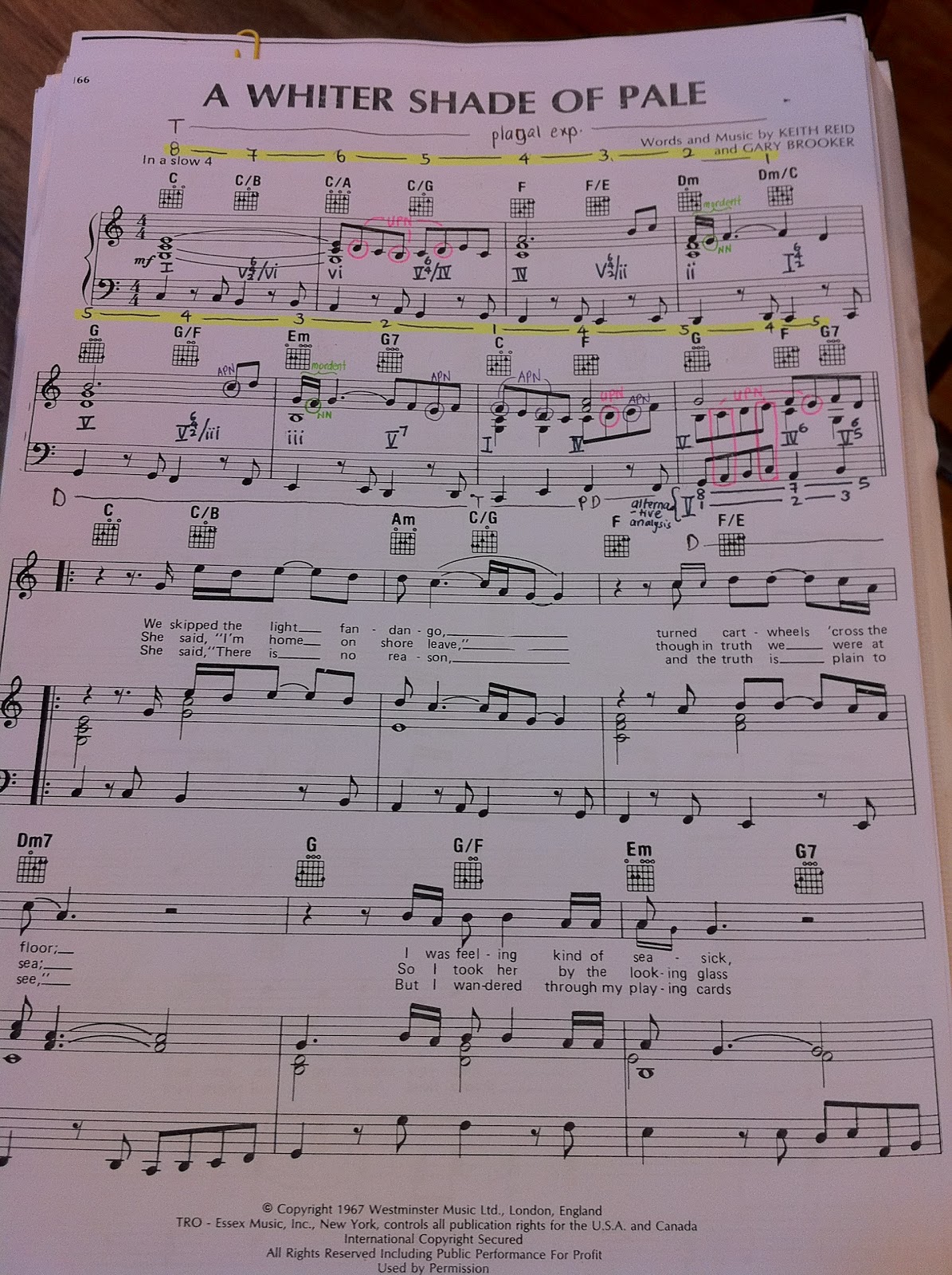A Whiter Shade of Pale is the debut song by the British band Procol Harum and was released in 1967. This popular song has been covered more than 1000 times! So what is so enigmatic about this piece?
The first thing that strikes you about this song is that it is all about patterns: melodic patterns, chordal patterns and of course, the walking bass movement.
[The first 8 bars (introduction) of the song is analyzed in detail because that basically sums up the structure of the entire piece, including the chorus]
Legend for score analysis:
- note circled in pink denotes unaccented passing note (UPN)
- note circled in purple denotes accented passing note (APN)
- note circled in green denotes neighbour note (NN)
- numbers highlighted in yellow denotes walking bass
**********************************************************************************
Melody
The melody is made up of an alternation of long notes (semibreve) and quavers consisting of unaccented passing notes (UPN), accented passing notes (APN) and neighbour notes (NN).
Chord Progression and Harmonic Function
More patterns can be seen in the chord progression. As you can see from the analyzed score, every descending third movement is intercepted by a tonicization. For example, chord I is followed by a tonicizing of chord vi, before moving to chord vi, and undergoing a tonicization of IV, before going to IV, and so on.
Under harmonic function, I see the first 4 bars as a plagal expansion, and from bar 5 to 8, a dominant expansion.
Hypermetre
- Bars 1-2
- Bars 3-4
- bars 5-8
Phrase Structure
The phrase structure is unique because it does not seem to have an antecedent nor consequent phrase. The whole of the 8 bars consist of just 1 phrase, with the short short long sentence structure of 2+2+4.
Interesting notes
Like I have mentioned before, this is one of the rare few songs that uses an almost similar chord progression for both the verse and choruses!
BAROQUE PIECE PARALLEL
Now, having listened to A Whiter Shade of Pale, does another piece strike you as being familiar? That's right! The second movement from Bach's Orchestral Suite No. 3 in D major, BWV 1068, famously adapted by August Wilhelmj into "Air on the G String", is another work that features the walking bass. Can you listen out for it? =)



Lynette,
ReplyDeleteNice example of a pop song based on a descending bass. There is no tonicization in the first four bars, only passing 4/2 harmonies in the latter half of each bar. Functionally, the descent takes us from T to PD. At the end, the passing bass C in b. 4 is meant to continue down to B but leaps to G instead, which then proceeds down to C. Bars 5-8 is therefore D-T-D, not D expansion.
Thereafter, the 6-bar ground bass pattern basically moves I-vi-IV-ii-V repeatedly. I'll comment on your phrase analysis in your other post.